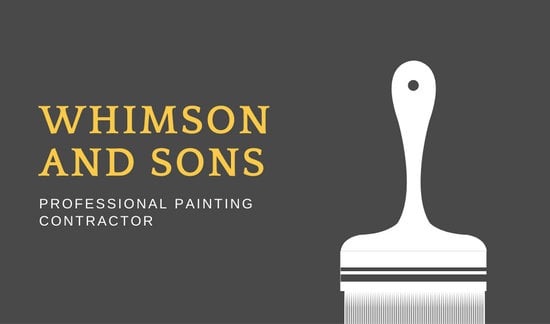Seasonal Consider Business Outside Painting: Trick Insights You Need To Be Aware Of
Seasonal Consider Business Outside Painting: Trick Insights You Need To Be Aware Of
Blog Article
Short Article Author-Carlson Urquhart
When you're preparing an industrial outside painting job, seasonal variables can make or break your results. You'll wish to take into consideration just how temperature and moisture influence paint application and drying out times. Selecting the ideal period can ensure your paint sticks effectively and lasts much longer. But which interior painting are absolutely the best for this sort of job? Let's check out the key elements that can influence your task's success.
The Influence of Temperature Level on Paint Application
When you're intending a business exterior painting task, the temperature can significantly affect exactly how well the paint sticks and dries.
Preferably, you wish to paint when temperature levels vary in between 50 ° F and 85 ° F. If it's too cold, the paint may not cure effectively, resulting in problems like peeling or cracking.
On the other hand, if it's as well hot, the paint can dry as well promptly, protecting against appropriate adhesion and causing an uneven finish.
You must additionally think about the time of day; morning or late afternoon provides cooler temperatures, which can be a lot more favorable.
Constantly check the supplier's suggestions for the certain paint you're utilizing, as they typically give support on the ideal temperature level range for ideal results.
Moisture and Its Result on Drying Times
Temperature level isn't the only ecological aspect that influences your business external painting project; moisture plays a significant function too. High moisture levels can decrease drying out times dramatically, affecting the overall quality of your paint task.
When the air is saturated with wetness, the paint takes longer to cure, which can lead to problems like bad bond and a greater risk of mold growth. If you're painting on an especially humid day, be prepared for prolonged wait times in between coats.
It's critical to monitor regional weather and strategy as necessary. Ideally, aim for humidity levels in between 40% and 70% for ideal drying out.
Maintaining these factors in mind guarantees your task remains on track and delivers a long lasting coating.
Best Seasons for Commercial Exterior Painting Projects
What's the best time of year for your industrial outside painting jobs?
Spring and very early fall are commonly your best options. During these periods, temperatures are mild, and humidity levels are commonly lower, creating optimal conditions for paint application and drying.
Stay clear of summer's intense heat, which can trigger paint to completely dry too swiftly, bring about bad adhesion and coating. In a similar way, winter season's cold temperature levels can hinder proper drying out and curing, running the risk of the durability of your paint work.
Aim for days with temperature levels between 50 ° F and 85 ° F for optimum outcomes. Remember to inspect the local weather report for rainfall, as wet problems can spoil your job.
Preparation around these variables guarantees your paint task runs efficiently and lasts longer.
Conclusion
Finally, preparing your industrial exterior painting tasks around seasonal factors to consider can make a substantial distinction in the end result. By organizing job throughout the optimal temperature levels and moisture degrees, you'll make sure far better attachment and drying times. Bear in mind to watch on local weather forecasts and pick the right time of year-- spring and early loss are your best choices. Taking Read Home will certainly assist you accomplish a resilient and professional surface that lasts.
